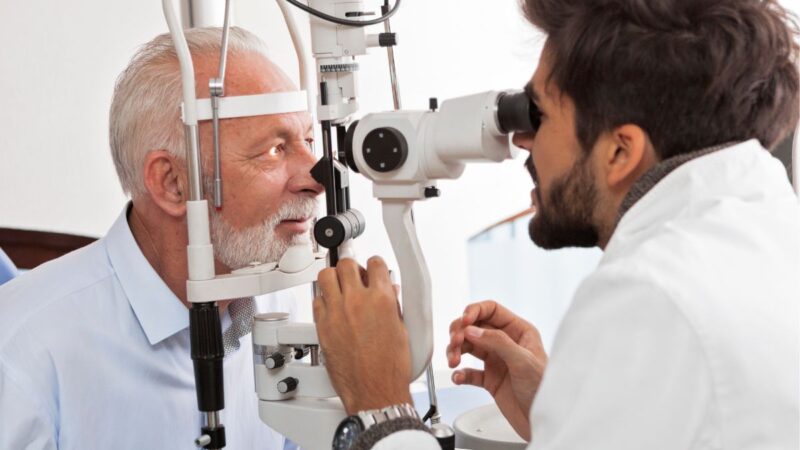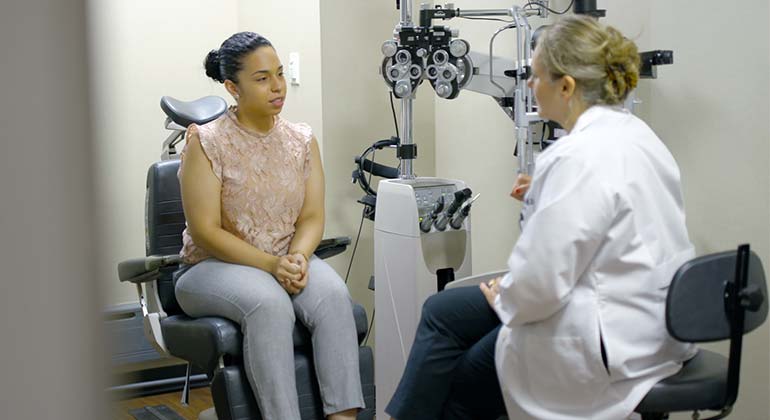Eye Facility in Andalusia: Advanced Vision Care Services Available
Eye Facility in Andalusia: Advanced Vision Care Services Available
Blog Article
The Advantages And Disadvantages of Different Refractive Surgical Treatments for Improved Eyecare

LASIK Surgical Treatment
LASIK surgical procedure is a commonly carried out refractive procedure that aims to deal with vision concerns such as astigmatism, farsightedness, and nearsightedness. This surgical strategy has gotten popularity due to its effectiveness in providing people with clearer vision and minimizing their reliance on glasses or get in touch with lenses. Throughout the treatment, a slim flap is produced on the cornea, and a laser is utilized to reshape the underlying cells, remedying the refractive error. The flap is after that repositioned, permitting quick recovery and minimal discomfort for the person.
One of the main advantages of LASIK surgery is the quick improvement in vision experienced by many patients. It is necessary for people taking into consideration LASIK surgical treatment to undergo an extensive assessment by an eye care specialist to establish if they are appropriate prospects for the treatment.
PRK Treatment
The PRK treatment, likewise called Photorefractive Keratectomy, is a kind of refractive surgical procedure that aims to remedy vision problems comparable to LASIK surgery. Unlike LASIK, which includes creating a flap in the cornea, PRK works on the surface layer of the cornea. Throughout the PRK treatment, the outer layer of the cornea, called the epithelium, is removed to enable reshaping of the underlying corneal tissue with an excimer laser. This improving assists to remedy refractive errors such as nearsightedness, farsightedness, and astigmatism.
One of the benefits of PRK over LASIK is that it removes the danger of flap-related problems since no flap is produced throughout the surgery. Despite the longer healing duration, PRK can be an appropriate choice for individuals seeking vision adjustment surgical treatment.
SMILE Surgical Procedure
A cutting-edge refractive surgery method acquiring popularity in the area of ophthalmology is SMILE Surgery. Tiny Cut Lenticule Removal (SMILE) is a minimally invasive treatment that deals with vision by reshaping the cornea utilizing a femtosecond laser. Unlike conventional LASIK surgery, SMILE Surgical procedure entails creating a little cut in the cornea to extract a lenticule, which leads to less disruption to the corneal framework and possibly much faster healing times.
Among the main benefits of SMILE Surgical treatment is its capacity to deal with myopia (nearsightedness) and astigmatism with high accuracy, causing superb visual outcomes for patients. The minimally invasive nature of the procedure likewise minimizes the threat of complications such as dry eye syndrome, making it a beneficial alternative for people looking for refractive surgical procedure.

LASEK Technique
Having actually explored the advantages and factors to consider of SMILE Surgical treatment, another significant refractive surgical treatment technique worth taking a look at is the LASEK Technique. LASEK, which means Laser-Assisted Subepithelial Keratectomy, is a form of laser eye surgical treatment that aims to correct refractive mistakes such as myopia (nearsightedness), hyperopia (farsightedness), and astigmatism.
Unlike LASIK, LASEK does not include creating a corneal flap. Instead, during a LASEK treatment, the surgeon uses a diluted alcohol remedy to loosen up the thin outer layer of the cornea, known as the epithelium.
One of the primary advantages of LASEK is that it can be suitable for individuals with slim corneas who may not be excellent candidates for LASIK. Additionally, LASEK normally results in marginal post-operative discomfort and a quicker recovery time compared to PRK. However, the visual recuperation procedure with LASEK may be slightly longer than with LASIK.
Implantable Get In Touch With Lenses
Implantable Contact Lenses use a long-term vision modification service for people seeking an alternative to conventional call lenses or glasses. These lenses, additionally andalusia pediatrics called phakic intraocular lenses, are operatively placed right into the eye to correct refractive mistakes such as nearsightedness (nearsightedness), hyperopia (farsightedness), and astigmatism. andalusia pediatrics. Unlike conventional contact lenses that remain on the surface of the eye, implantable get in touch with lenses function within the eye itself, offering clear vision without the need for daily maintenance or elimination
Among the vital benefits of implantable call lenses is their durability. When put, they can continue to be in the eye forever, providing constant and steady vision modification. Additionally, these lenses can read this article be an outstanding alternative for individuals that are not good prospects for laser eye surgical procedure or who like a relatively easy to fix vision modification treatment.
Nonetheless, implantable contact lenses do carry some risks, consisting of the capacity for cataracts or raised eye pressure. It is critical for individuals considering this alternative to seek advice from an eye care expert to figure out if implantable get in touch with lenses are the ideal choice for their specific requirements and eye health and wellness.
Final Thought
In final thought, each sort of refractive surgical treatment has its very own advantages and drawbacks. LASIK surgical procedure is prominent for its quick healing time, while PRK procedure might be ideal for clients with slim corneas. SMILE surgery supplies marginal pain during the procedure, but LASEK strategy might have a longer healing process. Implantable call lenses provide an alternative for those that are not ideal candidates for conventional surgical procedures. Clients need to seek advice from with their eye treatment company to determine the best option for their specific requirements.

Overall, SMILE Surgery provides an appealing option for people looking to enhance their vision via refractive surgical treatment.
Report this page